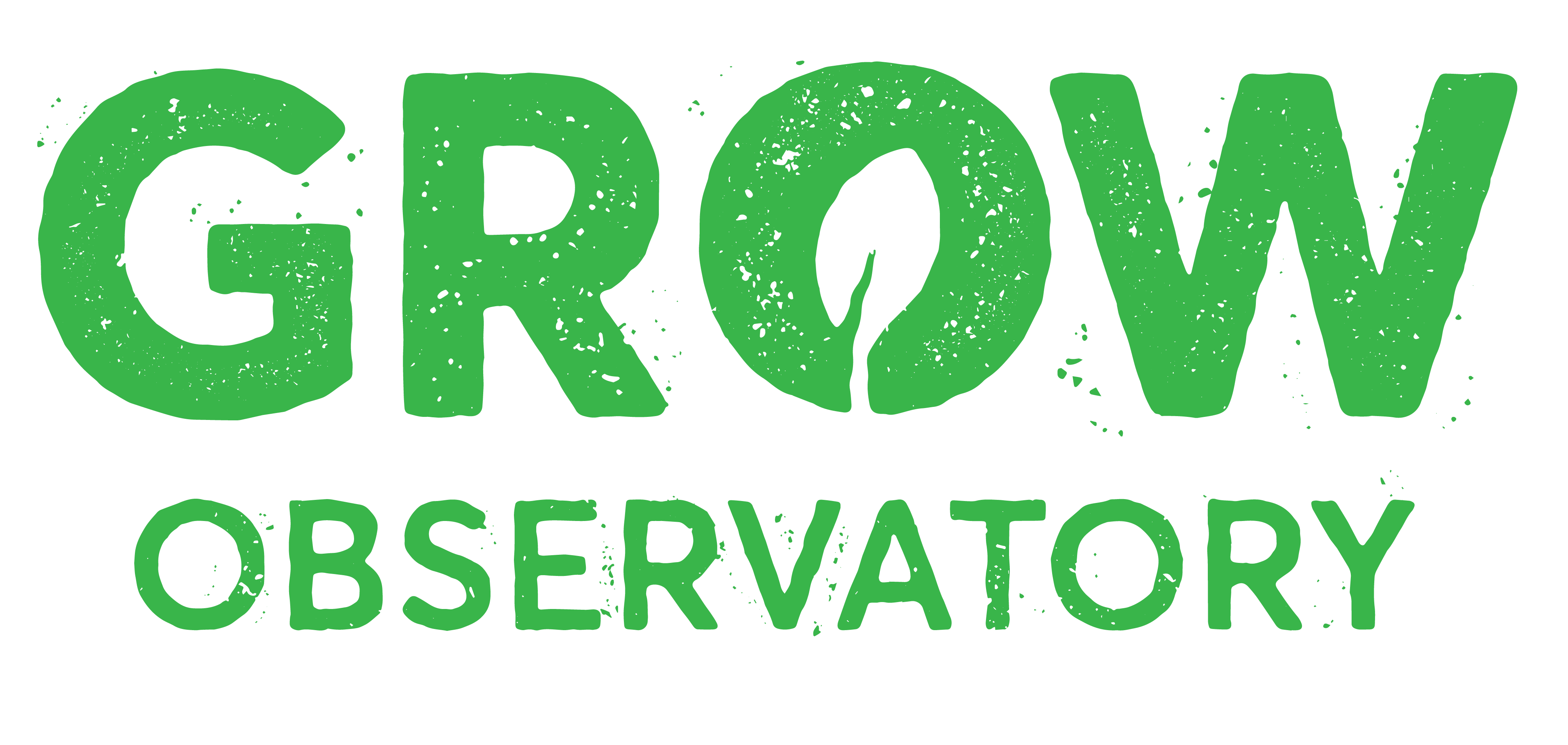No-dig/no till growing practices (and conservation agriculture)
Dr. Chris Warburton Brown, May 2019






Traditionally, arable farmers have practised tillage with the plough, while gardeners have dug their soil with the spade. This was done to produce a good tilth, remove weeds, break up heavy soil, expose pathogens, incorporate manure, increase water penetration and make sowing seeds easier. In recent years, however, no-till agricultural systems have rapidly increased in popularity in all parts of the globe. No-till farming is simply a way of growing crops or pasture without disturbing the soil.
The scientific literature on no-till systems is now vast. This review will begin with a definition of key terms. After this, it will present the claimed benefits of no-till, and then consider each in depth. Wherever possible, the focus will be on field experiments. The review will then turn to the evidence for no-till practice at a domestic scale, termed no-dig gardening. Finally, some concluding remarks will draw out the consistent threads in the literature.
Defining no-till agriculture
Headline: There is confusion over the use of 'no till' and similar terms, as they cover very diverse practices. This has led to some inconsistency in research conclusions. FAO provides a clear definition of Conservation Agriculture: no till combined with continuous crop cover and crop diversity/ rotation.
The terms no-till and no-dig seem self-explanatory. However, Derpsch and colleagues (2014) have expressed concerns about the term 'no-till' in general and 'no-till research' in particular. They point out that the term has sometimes been used despite considerable soil movement in the previous crop. They argue that this confusion over definitions has led to inconsistent and contradictory research conclusions; 'if >50% of the soil surface is disturbed... then the system cannot be termed no-tillage and must be defined as mulch tillage or some other form' (17).
Reicosky (2015) argued that the term 'conservation tillage' is also causes much confusion. He cites Baker et al. (2002) who identified 14 names for reduced tillage: zero-tillage, chemical-plowing, stale-seedbed, chemical fallow, no-till, direct-seeding, disc drilling, drillage, sod-seeding, minimum-tillage/reduced-tillage, strip-tillage, ridge-tillage, and residue farming, all with some sort of conservation goal. Mannering and Fenster (1983) define conservation tillage as a broad term used with “any” tillage system and agree this has caused confusion.
To resolve confusion over terminology, in 2013 the FAO produced a clear definition of 'Conservation Agriculture' which goes beyond just no till: http://www.fao.org/conservation-agriculture/overview/principles-of-ca/en/ accessed 01/04/2019
(FAO,2013)
- Minimum mechanical soil disturbance: Less than 25% of the cropped area.
- Permanent soil organic cover: Three categories are distinguished: 30-60%, >60-90% and >90% ground cover.
- Species diversification: Rotation/association should involve at least 3 different crops.
This approach sees the benefits of no till, permanent crop cover and species diversification as mutually reinforcing.
In this review, three key terms will be used throughout; No till (NT), Conservation agriculture (CA) and Conventional / ploughed till (CT). Other terms will be explained when they occur in the text.
Global extent of no till agriculture, and its benefits
Headline: 111 million ha were under NT cultivation globally in 2009, with a growth rate of 6 million ha per annum. The seven key benefits claimed are reduced soil erosion, increased drought resilience, increased earthworms, increased wildlife, increased soil carbon, yield improvement and improved soil properties/ fertility.
In 2010 Derpsch et al concluded that 111 million ha were under NT globally, with a growth rate of 6 million ha per annum. No-till was being practised from the Arctic circle to 50º latitude south, from sea level to 3,000 m altitude, from extremely rainy areas to extremely dry ones. Fastest adoption rates were in South America. Lindwall and Sonntag (2010) presented a case study of how NT replaced CT as the standard wheat cultivation technique in Canada. Derpsch and colleagues (2017) argued 'no-till farming offers... a wide range of economic, environmental and social benefits... [and] is enabling agriculture to respond to some of the global challenges associated with climate change, land and environmental degradation, and increasing cost of food, energy and production inputs.' Holland's review of over 200 studies (2004) suggested that NT lowers energy consumption, raises carbon sequestration, improves biodiversity, reduces water-logging, drought, run-off and pollution, develops a rich soil biota and improves nutrient recycling. However Holland stressed some findings must be treated with caution until they can be verified at a larger scale. Grandy et al (2006) presented research-based arguments for wider adoption of permanent NT, arguing long-term yields can equal or exceed CT and that over time it increases plant N and C availability.
The many benefits of NT claimed in the literature can be categorised into 7 broad areas:
- Reduced soil erosion
- Increased drought resilience
- Increased earthworm populations
- Increased wildlife populations
- Increased soil carbon
- Yield improvement
- Improved properties and fertility of soil
Reduced soil erosion
Headline: Experimental studies have consistently shown that no-till soils combined with continuous crop cover have very low vulnerability to both water and wind erosion in all climatic zones.
Keesstraa and colleagues (2016) concluded soil erosion in apricot orchards in Valencia, Spain was 45.5 times greater under herbicide treatment, which kept, than in no-till permanently covered soil.. Mendez and Buschiazzo (2010) concluded that wind erosion was lower in no-till wheat than in CT due to high soil coverage with plant residues in the semiarid pampas of Argentina. Prasuhn's experiment (2010) in the Swiss Midlands was unusual as it covered a full catchment area: mean soil loss in NT fields was an order of magnitude lower than that from ploughed fields. Mchunu et al (2010) evaluated soil losses from traditional small-scale maize fields in South Africa under CT and NT, with crop residue cover of just 10%: top-soil soil organic carbon was 26% higher under NT and soil losses 68% lower. Labrière et al (2015) considered field studies from 21 humid tropical countries to conclude that NT alone is not sufficient to prevent heavy erosion; uncovered soils should be avoided, and contour planting and inter-cropping utilised, to deliver substantial decreases in soil loss.
Increased drought resistance
Headline: There is considerable experimental evidence that conservation agriculture can stabilise yields in drought years and in semi-arid regions. However, the evidence base, and the extent to which such practices have actually been adopted by smallholders in Africa, are disputed.
A review by Mazvimavi (2016) considered 100 papers covering the contribution of CA to drought resilience in Sub-Saharan Africa (SSA). CA seems to provide improved resilience to climate change and drought. However, data measuring the benefits of CA under non-experimental conditions are limited. Bescansa et al (2006) concluded in semi-arid northern Spain that available water capacity was greatest with NT, with yields generally similar, except in the driest year where NT produced more. This general equivalence between NT and CT yields, but with better NT yields in dry years, was also found in experiments on durum wheat in Italy (Devita et al 2007) and on wheat-maize in China (He et al 2011).
Such findings were contradicted by Materechera et al (1997) looking at maize growth on ridge-tillage systems in Malawi, where penetration resistance was less under CT and yields 5% higher. However, NT resulted in a remarkable reduction of working time and energy with maize yields still exceeding 4000 kg/ha. In 2013 The Nebraska Declaration on Conservation Agriculture, signed by 43 scientists from a wide range of disciplines, gave a sceptical assessment of the current evidence base for CA in SSA, and appealed for more research on all its aspects. They argued there was little evidence of widespread adoption of CA by smallholders in SSA.
Increased earthworm populations
Headline: A very well researched area, with experimental studies confirming a strong correlation between no-till and increased earthworm populations, especially when combined with regular manuring and continuous crop cover.
Earthworms have positive effects on the development of soil structure, water regulation, nutrient cycling, primary production, climate regulation, pollution remediation, and cultural services (Bertrand et al 2015). Bertrand et al (2015) reviewed 28 field studies to conclude that tillage tends to reduce earthworm populations, and recommend no till or reduced till. These findings have been confirmed by field experiments in France, Ontario and Tennessee. The French study (Pelosi et al 2009) concluded earthworm biomass in a living mulch (NT) system was 3 to 12 times greater than in CT. The Ontario study (Fox et al 2017) showed that conversion of conventional till to no till resulted in consistent increases in earthworm abundance over a 15 year sampling period. The Tennessee study (Ashworth et al 2017), while concluding no till systems combined with poultry manure and crop residues were highly beneficial to worm populations, added one caveat; under continuous cotton cultivation, which is pesticide intense, worm populations halved.
Increased wildlife populations
Headline: There has been surprisingly little experimental work in this area. However, studies suggest a significant increase in wildlife populations under NT systems compared to CT.
Van Beek et al (2014) compared avian communities between CT and NT in soy bean fields in Illinois, USA: NT had greater densities of birds, triple the nesting density and greater conservation value. Witmer et all (2007) measured rodent populations and tested different control methods in Washington, USA: mouse populations were much higher in NT fields than in previous studies of CT fields and can remove 5–15% of pea plants. All the control methods tested proved unsuccessful. Santlema et al (2006) modelled the biodiversity effects of five different agricultural scenarios in Iowa, USA. The 'biodiversity scenario' included 32% conservation till and 35% row cropping and produced higher populations of native birds, amphibians, mammals, and rare species than the pre-agricultural wild landscape. This suggests NT agriculture is entirely compatible with landscapes of high biodiversity.
Increased soil carbon
Headline: Major increases have been claimed for soil carbon storage in NT, with big implications for tackling climate change. However, these figures are disputed, due to suggested methodological errors and disappointing results from experimental studies.
Much was made of the increase in soil carbon in no till agriculture, and the potential benefit to climate change mitigation, in the The Emissions Gap Report 2013 (United Nations Environment Programme, 2013). It reported that no-till agriculture may build up an additional 500 kg per hectare a year of soil organic carbon, and cited national Climate action plans from Brazil (Ministério do Meio Ambiente, Brazil 2016), Kenya (Stiebert et al., 2012) and China (Cheng et al., 2013a) suggesting no-till farming may already sequester over 2 MtCO2e globally per year. However, these optimistic results were disputed by Polwson et al (2014) who cite a large body of experimental evidence showing that the quantity of additional organic carbon in soil under no-till is relatively small, and limited to the top 10 cm. They agree NT is beneficial for soil quality and climate change, but argue that its role in mitigation is widely overstated. Luo et al (2010) agree: their meta analysis of 69 paired experiments concluded that conversion from CT to NT changed the distribution of C in the soil profile significantly, but did not increase the total soil carbon.
Crop yield
Headline: Experimental studies show NT yields are generally comparable or slightly better than CT yields. The claim that NT yields are consistently higher is not supported. NT yields tend to be superior in dry years.
In a continuous durum wheat system in Foggia and Vasto, Italy, Devita et al (2007) compared CT and NT. Higher yield was obtained with NT than CT at Foggia, and quality was consistently higher, while yields at Vasto were comparable, except in the third year when CT produced more. In Gaocheng on the North China Plain, He et al (2011) concluded long-term NT significantly increased soil organic matter, available N and P., with wheat and maize yields averaging 3.5% and 1.4% higher under NT, particularly in the dry years. Silici and colleagues (2011) surveyed 229 farmers in Lesotho. Farmers producing maize with likoti (a locally designed CA practice using NT growing pits) returned a profit whereas those who ploughed incurred a loss. 662 plots were measured by Naudin et al in Cameroon (2010), with maize/sorghum yields equivalent or higher in CA compared to CT but cotton yields lower except when NT systems included mulching. He and colleagues (2009) conducted a 10 year field experiment in Inner Mongolia, China comparing four cultivation systems (NT with straw cover, sub-soiling with straw cover, roto-tilling with straw cover and traditional tillage) on spring wheat/oats. The largest yield improvements (+14%) coupled with the greatest water use efficiency (+13.5%) were achieved by NT with straw cover compared to CT. Calonego et al (2017) conducted a 14 year study of compacted soils in São Paulo, Brazil, where rotations of cover crops with vigorous roots reduced soil compaction just as effectively as mechanical cultivation, and led to equivalent yields of soy bean and sorghum.
Improved properties and fertility of soil
Headline: This is the most studied aspect of NT systems. Experimental studies consistently show an increase in available water, N and C and reduced soil compaction. Findings on bulk density and other soil properties vary between studies.
Blanco-Canqui et al (2018) compiled global published studies on NT impact on soil. NT can reduce soil compaction and increase wet aggregate stability, water infiltration, and available water. It had no consistent effects on soil temperature, soil consistency, bulk density, penetration resistance and shear strength. Addition of companion practices (i.e., cover crops, C amendments) can enhance NT performance. In the Daxing region of China, Hui and colleagues (2013) found that C, N, P and K were significantly increased and wheat and maize yields slightly increased in 160cm-wide NT permanent raised beds compared to NT and CT. Thomas et al (2007) in semi-arid, subtropical South Queensland, Australia, found little difference in soil carbon in the 10-30 cm depth between different treatments and significantly greater C, N, P and K in the 0–10 cm depth under NT.
Madejon et al (2009) studied soils in Lleida, Zaragoza and Seville, Spain: increases in soil organic matter and enzymes were found under long-term reduced till and NT, suggesting conservation tillage is an effective strategy to improve soil in Mediterranean areas. Mitchell et al (2017) focused on long-term (15 year) soil health under a cotton-tomato rotation in an arid irrigated environment in California. Soil aggregation, water infiltration, N, C, residue cover, and biological activity were all increased by NT and cover crops, with similar crop yields. A 14 year study of soil physical properties in NT was conducted by Calonego et al (2017) in São Paulo, Brazil, where the use of rotated cover crop plants with vigorous roots reduced soil compaction as effectively as mechanical cultivation. Mazzoncini et al (2016), working in San Pieroa Grado Italy, concluded that after 28 years of continuous NT, C and N in the 30cm soil depth increased by 22% compared to initial values, while they decreased in the CT control.
No dig systems at garden scale
Headline: There is a paucity of research in this area. However, the long-term pioneering work of Charles Dowding suggests greater vegetable yields from no-dig beds than from dug beds. Urban turf gardening is a wide spread NT system that has been hardly researched.
No-dig gardening was pioneered in Japan by Masanobu Fukuoka (1978), in the UK by F. C. King (1946) and A. Guest (1973), in Australia by Esther Dean (1971), and in America by Ruth Stout (1961). However, in contrast to agricultural NT systems, there has been very little scientific study of either the uptake or the benefits of the technique. One notable exception is Charles Dowding (2019a, 2019b), who has conducted a 13 year yield comparison experiment in Somerset, UK. His findings have not been peer reviewed or published, but are available online. Dowding uses permanent raised beds fed with farm manure and home made compost, and with close to permanent crop cover. In his first experiment, over six cropping seasons, vegetable yields from the no dig beds out-performed the dug beds by 6.4%, with salad crops yielding 15% more. In his second experiment, over a further six cropping seasons, no-dig yields out-performed the dug beds by 10.1%.
Conclusion
This review has shown that five of the seven claimed benefits of NT practices are strongly supported by scientific evidence: reduced soil erosion, increased drought resilience, increased earthworm populations, increased wildlife populations and improved properties and fertility of soil. In each of these areas, NT has been shown in numerous studies to produce superior results to CT. The evidence base comes from all inhabited continents and from many different soil types and climate zones.
Two of the claimed benefits remain in dispute. While it can be stated with confidence that crop yields from NT systems are comparable to those from CT systems, only some studies report increased yield from NT systems. NT seems to maintain higher yields compared to CT in dry and drought years. All studies suggest that NT causes some increase in soil organic carbon, but the strength of this is disputed between a very substantial increase and only a marginal increase, especially below 10 cm soil depth. Due to the need to sequester carbon as part of tackling climate change, this uncertainty in the evidence base needs to be resolved through further research.
One clear finding from the literature are the mutually reinforcing effects of NT, permanent crop cover and crop diversity, as stated in the FAO definition of Conservation Agriculture. One additional practice suggested by a number of studies is the addition of carbon rich fertiliser, either as farmyard manure or as crop residue applied as a mulch. Many of the benefits of NT become marginal without the supporting use of cover crops, crop diversity and carbon-rich fertiliser.
No dig gardening practice is chronically under-researched. It cannot be assumed that the benefits seen from the implementation of NT at field scale will reproduce at garden scale. There is a need to explore all the established benefits of NT at garden scale to see if they transfer, and to establish which practices work best on a small scale using hand tools and human labour.
NT is already well established globally and practised in almost every country. In some countries it is already the dominant form of agricultural cultivation. This review suggests that its benefits are numerous, especially when part of a wider system of conservation agriculture, and that it can only become more widespread as those benefits become better known and further researched.
Acknowledgements
 An academic literature review by Chris Warburton Brown of the Permaculture Association (Britain) as part of our collaborative GROW Observatory project.
An academic literature review by Chris Warburton Brown of the Permaculture Association (Britain) as part of our collaborative GROW Observatory project. 
 The GROW Observatory has received funding from the European Union's Horizon 2020 research and innovation programme under grant agreement No 690199.
The GROW Observatory has received funding from the European Union's Horizon 2020 research and innovation programme under grant agreement No 690199.
References
Most of these are available online. Search Google Scholar by title.
Ashworth, A. J., Allen, F. L., Tyler, D. D., Pote, D. H., & Shipitalo, M. J., 2017. Earthworm populations are affected from long-term crop sequences and bio-covers under no-tillage. Pedobiologia, 60, pp. 27–33.
Bertrand, M., Barot, S., Blouin, M., Whalen, J., de Oliveira, T., Roger-Estrand, J., 2015. Earthworms for Cropping Systems: A Review. Agronomy for Sustainable Development 35(2) pp.553-567
Bescansa, P., Imaz, M. J., Virto, I., Enrique, A. & Hoogmoed, W. B., 2006. Soil water retention as affected by tillage and residue management in semiarid Spain. Soil & Tillage Research 87, pp.19–27.
Blanco-Canqui, H., & Ruis, S. J., 2018. No-tillage and soil physical environment. Geoderma, 326, pp.164–200.
Calonego, J. C., Raphael, J. P. A., Rigon, J. P. G., Oliveira Neto, L. de, & Rosolem, C. A., 2017. Soil compaction management and soybean yields with cover crops under no-till and occasional chiseling. European Journal of Agronomy, 85, 31–37.
Casão Junior, R., Araújo, A.G. de., Llanillo, R.F., 2012. No-till agriculture in Southern Brazil: factors that facilitated the evolution of the system and the development of the mechanization of conservation farming. FAO and Instituto Agronômico do Paraná.
Cheng, K., Zheng, J., Nayak, D., Smith, P. and Pan, G., 2013. Re‐evaluating the biophysical and technologically attainable potential of topsoil carbon sequestration in China's cropland. Soil Use and Management, 29(4), pp.501-509.
Dean, E., 1971. Esther Dean's Gardening Book: Growing without Digging Longman Higher Education
D'Emden, F.H., Llewellyn, R.S. and Burton, M.P., 2006. Adoption of conservation tillage in Australian cropping regions: an application of duration analysis. Technological Forecasting and Social Change, 73(6), pp.630-647.
Derpsch, R., Friedrich, T., Kassam, A. and Li, H., 2010. Current status of adoption of no-till farming in the world and some of its main benefits. International Journal of Agricultural and Biological Engineering, 3(1), pp.1-25..
Derpsch, R., Franzluebbers, A.J., Duiker, S.W., Reicosky, D.C., Koeller, K., Friedrich, T., Sturny, W.G., Sá, J.C.M. and Weiss, K., 2014. Why do we need to standardize no-tillage research?. Soil and Tillage Research, 137, pp.16-22.
Devita, P., Dipaolo, E., Fecondo, G., Difonzo, N., & Pisante, M., 2007. No-tillage and conventional tillage effects on durum wheat yield, grain quality and soil moisture content in southern Italy. Soil and Tillage Research, 92(1-2), 69–78.
Dowding, C. 2019a. No Dig Trial 2013-19 online. Available at: https://www.charlesdowding.co.uk/no-dig-trial-2013-2018-current-year-at-top/ Accessed May 2019
Dowding, C., 2019b. Lower Farm Trials online. Available at: https://www.charlesdowding.co.uk/lower-farm-trials/ accessed May 2019
Fox, C.A., Miller, J., Joschko, M., Drury, C. & Reynolds, W.D., 2017. Earthworm population dynamics as a consequence of long-term and recently imposed tillage in a clay loam soil. Canadian Journal of Soil Science, 97 (4)
Friedrich, T., Derpsch, R. and Kassam, A., 2017. Overview of the global spread of conservation agriculture. In Sustainable Development of Organic Agriculture (pp. 75-90). Apple Academic Press.
Fukuoka, M., 1978. The One-Straw Revolution: An Introduction to Natural Farming Rodale Press, New York
Grandy, A. S., Robertson, G. P., & Thelen, K. D., 2006. Do Productivity and Environmental Trade-offs Justify Periodically Cultivating No-till Cropping Systems? Agronomy Journal, 98(6), 1377.
Guest, A., 1973. Gardening Without Digging Essence of Health Publishing Company
He, J., Li, H., Rasaily, R. G., Wang, Q., Cai, G., Su, Y., Liu, L., 2011. Soil properties and crop yields after 11 years of no tillage farming in wheat–maize cropping system in North China Plain. Soil and Tillage Research, 113(1), 48–54.
He, J., Kuhn, N. J., Zhang, X. M., Zhang, X. R., & Li, H. W., 2009. Effects of 10 years of conservation tillage on soil properties and productivity in the farming-pastoral ecotone of Inner Mongolia, China. Soil Use and Management, 25(2), 201–209.
Holland J.M., 2004. The environmental consequences of adopting conservation tillage in Europe: reviewing the evidence. Agriculture, Ecosystems & Environment, 103, 1-25
Hui, L., Jin, H., Qingjie, W., Hongwen, L., Sivelli, A., Caiyun, L., Xiangcai, Z., 2013. Effects of Permanent Raised Beds on Soil Chemical Properties in a Wheat-Maize Cropping System. Soil Science, 178(1), 46–53.
Keesstra, S., Pereira, P., Novara, A., Brevik, E.C., Azorin-Molina, C., Parras-Alcántara, L., Jordán, A. and Cerdà, A., 2016. Effects of soil management techniques on soil water erosion in apricot orchards. Science of the Total Environment, 551, pp.357-366.
King, F.C., 1946. Is Digging Necessary? The Indore System of Composting New Times Publishing, Melbourne, Australia
Labrière, N., Locatelli, B., Laumonier, Y., Freycon, V. and Bernoux, M., 2015. Soil erosion in the humid tropics: A systematic quantitative review. Agriculture, Ecosystems & Environment, 203, pp.127-139.
Lindwall, W. and Sonntag, B. (Eds.)., 2010. Landscapes Transformed: The History of Conservation Tillage and Direct Seeding. Canada: Knowledge Impact in Society. Available at: https://www.gwct.org.uk/media/841599/Landscapes-Transformed-The-History-of-Conservation-Tillage-and-Direct-Seeding.pdf, accessed 1st May 2019
Llewellyn, R.S. and D'Emden, F., 2010. Adoption of no-till cropping practices in Australian grain growing regions. Australian Government, Grains Research and Development Corporation.
Luo, Z., Wang, E. and Sun, O.J., 2010. Can no-tillage stimulate carbon sequestration in agricultural soils? A meta-analysis of paired experiments. Agriculture, Ecosystems & Environment, 139(1-2), pp.224-231.
Madejón, E., Murillo, J.M., Moreno, F., López, M.V., Arrue, J.L., Álvaro-Fuentes, J. and Cantero, C., 2009. Effect of long-term conservation tillage on soil biochemical properties in Mediterranean Spanish areas. Soil and Tillage Research, 105(1), pp.55-62.
Materechera, S.A. and Mloza-Banda, H.R., 1997. Soil penetration resistance, root growth and yield of maize as influenced by tillage system on ridges in Malawi. Soil and Tillage Research, 41(1-2), pp.13-24.
Mazvimavi, Kizito. 2016. Conservation Agriculture Literature Review. Vuna Research Report. Pretoria: Vuna. Online: http://www.vuna-africa.com Available at: http://oar.icrisat.org/11077/1/Assessing-the-contributions-of-conservation-Literature-Review.-Mazvimavi-K..pdf Accessed October 2019.
Mazzoncini, M., Antichi, D., Di Bene, C., Risaliti, R., Petri, M., & Bonari, E., 2016. Soil carbon and nitrogen changes after 28 years of no-tillage management under Mediterranean conditions. European Journal of Agronomy, 77, 156–165.
Mchunu, C.N., Manson, A. Lorentz, S., Jewitt, G. & Chaplot, V., 2011. 'No-Till Impact on Soil and Soil Organic Carbon Erosion under Crop Residue Scarcity in Africa.' Soil Science Society of America Journal, 75, pp.1503-1512
Mendez, M.J. & Buschiazzo, D.E., 2010. 'Wind erosion risk in agricultural soils under different tillage systems in the semiarid Pampas of Argentina.' Soil and Tillage Research, 106, pp.311-316
Ministério do Meio Ambiente, Brazil, 2016. National Plan for Low Carbon Emission in Agriculture (ABC Plan) http://redd.mma.gov.br/en/legal-and-public-policy-framework/national-plan-for-low-carbon-emission-in-agriculture-abc-plan Accessed May 2019
Mitchell, J.P., Shrestha, A., Mathesius, K., Scow, K.M., Southard, R.J., Haney, R.L., Schmidt, R., Munk, D.S. and Horwath, W.R., 2017. Cover cropping and no-tillage improve soil health in an arid irrigated cropping system in California’s San Joaquin Valley, USA. Soil and Tillage Research, 165, pp.325-335.
Naudin, K., Gozé, E., Balarabe, O., Giller, K.E. and Scopel, E., 2010. Impact of no tillage and mulching practices on cotton production in North Cameroon: a multi-locational on-farm assessment. Soil and Tillage Research, 108(1-2), pp.68-76.
Prasuhn, V., 2012. On-farm effects of tillage and crops on soil erosion measured over 10 years in Switzerland. Soil and Tillage Research, 120, pp.137-146.
The Nebraska Declaration on Conservation Agriculture, 2013 Available at: https://ispc.cgiar.org/sites/default/files/ISPC_StrategyTrends_Conserva… Accessed May 2019
Pelosi, C., Bertrand, M. and Roger-Estrade, J., 2009. Earthworm community in conventional, organic and direct seeding with living mulch cropping systems. Agronomy for Sustainable Development, 29(2), pp.287-295.
Powlson, D.S., Stirling, C.M., Jat, M.L., Gerard, B.G., Palm, C.A., Sanchez, P.A. and Cassman, K.G., 2014. Limited potential of no-till agriculture for climate change mitigation. Nature Climate Change, 4(8), pp.678-683.
Santelmann, M., Freemark, K., Sifneos, J., & White, D., 2006. Assessing effects of alternative agricultural practices on wildlife habitat in Iowa, USA. Agriculture, Ecosystems & Environment, 113(1-4), 243–253.
Silici, L., Ndabe, P., Friedrich, T. and Kassam, A., 2011. Harnessing sustainability, resilience and productivity through conservation agriculture: the case of likoti in Lesotho. International Journal of Agricultural Sustainability, 9(1), pp.137-144.
Smith, P., Martino, D., Cai, Z., Gwary, D., Janzen, H., Kumar, P., McCarl, B., Ogle, S., O’Mara, F., Rice, C., Scholes, B., Sirotenko, O., Howden, M., McAllister, T., Pan, G., Romanenkov, V., Schneider, U., Towprayoon, S., Wattenbach, M., Smith, J., 2008. ‘Greenhouse gas mitigation in agriculture’. Philosophical Transactions of the Royal Society of London, 363: 789–813
Stieber, S., Murphy, D., Dion, J., Iisd, M. and Sawyer, D., 2012. Kenya’s Climate Change Action Plan: Mitigation Chapter 3: Agriculture. Ministry of Environment and Natural Resources. Available at: http://www.kccap.info/phocadownload/final/SC4/Chapter%203%20SC4_%20agriculture_FINAL.pdf Accessed October 2019.
Stout, R. 1961. Gardening without Work Norton Devon-Adair Company, New York
Thomas, G., Dalal, R., & Standley, J., 2007. No-till effects on organic matter, pH, cation exchange capacity and nutrient distribution in a Luvisol in the semi-arid subtropics. Soil and Tillage Research, 94(2), 295–304 4
Van Beek, K. R., Brawn, J. D., & Ward, M. P., 2014. Does no-till soybean farming provide any benefits for birds? Agriculture, Ecosystems & Environment, 185, 59–64.
Witmer, G., Sayler, R., Huggins, D., & Capelli, J., 2007. Ecology and management of rodents in no-till agriculture in Washington, USA. Integrative Zoology, 2(3), 154–164.
Zhao, X., Mu, Y., Chen, F., 2012. ‘Economic Benefits of Conservation Tillage and Evaluation of its Subsidies: From the Analysis of the Survey Farmers in Shanxi Province’. Economical Issue, 2: 74-77.